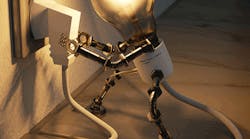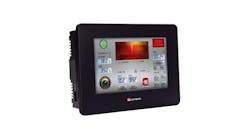The life of a co-packer is sometimes stressful. As a corporation, we want to always be in a position to respond to an unexpected opportunity. We have managed to keep ourselves in the product stream over the years by being able to respond to the challenges that come our way and, in most situations, manage to make it seem like it is easy. The activity in the background is anything but easy, and we always find ways to elevate heartbeats, if only for a little while. One such opportunity recently fell into our laps, and we have set out on a new journey of exploration and understanding.
If there is one thing I have learned over my 30-some years in this business, it is that companies might come and go, but the machines last forever.
I’m not talking about something from the time of the Romans, but it isn’t all that uncommon to come across a machine that was built in the ’60s or ’70s and is still producing product today. It speaks volumes to the creativity of the original designers that the equipment is still in service today.
The legacy of these stellar machines is they are mechanically outliving their electrical components. Technology, as we well know, is advancing at ever-increasing rates. What was state of the art 40-50 years ago is now little more than a boat anchor. The machine still works, but the control platform that runs it has become obsolete. At what point do we stir the hornets’ nest and attempt to update the controls?
In a nod of respect to my former career as a manufacturer of original equipment, I would say that the first avenue of investigation should always be the OEM of your machine. After all, who knows the machine better than the folks that produced it in the first place? Well, as we recently found out, sometimes a connection to that OEM is no longer active, or, if it is, it is only as a legacy support provided by the corporation that bought out the OEM at some point in the past. The best you might get in a situation like this is a set of prints from when the machine was first produced or, if you are lucky, a more recent set from the last known owner, if the previous owner is still in business.
Our journey started just over a year ago, when we found out about a plant near us that produced a very similar product format but in larger dimensions. This plant was closing, and the equipment was to be sold at auction.
Forward thinking, as we tend to be, we thought it would be worth our while to sift through the inventory and see which items might be of future use to us. There was a lot of machinery that was of the same type and vintage as the ones we had in our inventory, but two that stood out were horizontal cartoners that, at the time of the plant closing, were operational and producing some larger format bag-in-box cartons.
We jumped into the bid process and, to our delight, managed to get both machines at a fraction of the cost of a new one. It was practically a steal, and we were excited to get these machines relocated to our facility and give them a good looking over.
The close-up inspection gave us a fairly large obstacle to overcome. One machine had a current control platform, ControlLogix, and the second had an older platform, PLC-5.
Oddly, the two were produced just five years apart, so, while they were of similar vintage mechanically, the control systems were radically different. As it would happen, the older machine with the PLC-5 would be the one that would first suit an upcoming opportunity to diversify into a different product line than we had previously produced. Recognizing that the PLC-5 was an older platform, we did some risk analysis to determine if we would want to launch a new production line with such a platform in place. The answer quickly became a no.
We were already reluctant to go with keeping the platform because we didn’t have a single piece of equipment in our inventory that used a PLC-5, so that would mean, at the very least, new programming software to be able to get online and troubleshoot, not to mention any alterations to suit our new production configuration.
The deciding factor for us was the fact that the venerable PLC-5 platform was officially retired in June 2017. The vendor no longer offered support for the platform, and any hardware or software would have to be purchased on the open market via e-commerce.
So, what do we do with our new purchase, and how do we give it a new lease on life? Most vendors would be happy to quote a new PLC platform. The hardware, after all, is pretty easy to upgrade by simply picking the desired platform and then choosing I/O modules that match the existing ones. Sometimes, one even gets lucky and can pick these out as a one-to-one swap—ac module for ac module, dc for dc, digital for digital, analog for analog. The catch is usually in the accessories.
This particular machine, for example, used a hybrid positioning module for the resolver on the main cycle shaft. There wasn’t a modern version of this module, so a new way of providing position feedback would have to be figured out.
For us, the easiest way was to leave out the resolver module and replace the resolver itself with an Ethernet I/P encoder that would communicate directly with the new processor.
Another catch was the aftermarket replacement of the standard operator panel with a Wonderware thin-client display. While this is great technology, it isn’t something that we currently use in our inventory, and, without the original files and a hefty cost outlay for program development software, it wasn’t something that we could use. Finally, some of the additions to the machine included the use of Remote I/O, another vintage technology that has been retired from active support by the vendor.
What I’ve described above are some of the compelling reasons why most consumer product producers would shy away from buying used equipment. The upgrade of packaging machinery is best left in the hands of professionals whose business it is to make such machines come back to life when the control system becomes obsolete. For those less faint of heart, plunging into a rebuild or upgrade can also be a rewarding experience where many lessons are learned that can be transferred to other projects. Even the research into what is involved in bringing new life to vintage equipment can be rewarding in and of itself.
The PLC-5 platform has been around a very long time. The makers of it, Rockwell Automation (Allen-Bradley) recognized quite some time ago that there would come a day when the technology was just too old to support economically.
The newer PAC technologies left the PLC-5 platform behind a long time ago, but, as mentioned earlier, when something works for decades, it is hard to justify changing it out just because a newer technology is available. Any change of platform is going to come with some capital expense.
Rockwell Automation has invested a lot of energy and resources into coming up with ways to transition from the vintage platforms to the newer ones, and these methods are worth mentioning here as they have great value for consideration when attempting such a project. Like most upgrade projects, there are a couple of options.
One method is to keep the existing I/O system and choose a new PLC that can communicate with the older I/O. In the situation I have described above, this really isn’t an option for a couple of reasons. First, there isn’t a way to replace the PLC with a communications card that would then communicate with the new PLC or PAC. And, second, there is the legacy Remote I/O communications that is also obsolete.
Another method is to completely replace the old system with a new system. This seems to be the cleanest approach from a hardware standpoint but can be quite costly. There is also the consideration of a change in programming platform and software. Fortunately, most vendors, including Rockwell Automation, do offer translation software that will take the original programming software and convert it into the new platform.
This is not without pitfalls as not everything converts directly and some time is needed to comb through the program and clean up the questionable parts. For example, timers that were 1.0 or 0.01 time base need to be converted into 0.001 base. Some instructions don’t have direct replacements in the newer platform and must be coded by hand. The resultant, converted program will look similar to the original but seem strange since most newer platforms are tag-based, whereas the older ones were register-based.
The final method is a bit of a hybrid but can really help out if one needs to get the control system running as soon as possible. That method involves converting the application as in the above method but uses a clever wiring translator using hardware.
In this method, the 1771-based I/O system of the PLC-5 is reassigned to the ControlLogix platform, module by module. There is software to provide assistance with this process. The system designed by Rockwell Automation starts with pulling all the wiring arms off the 1771 I/O and removing the back plane of the I/O rack.
A new “rack” then gets installed using the same mounting screws as the original. Conversion modules then go in the new rack that interface with the old 1771-series wiring arms. A cover plate containing the new PLC rack and modules then screws onto the face of the conversion rack, and wiring adapters then connect the conversion rack connectors to the I/O modules of the new rack. The PLC program is then downloaded, and you are off to the races. The great thing about this method is you retain all your original wiring but get a brand new controller platform.
All of this new technology comes at a cost, of course. The most expensive, as you might imagine, is the last method with the conversion rack. All of that hardware is expensive, but, as the vendor says, one can do a physical conversion in as little as an hour. I would expect the re-commissioning of the software application to take some time, however.
The method where only the PLC changes and one retains the original I/O rack and modules is the least expensive but does offer the risk that at some point the I/O modules in the original rack will go bad and need to be replaced from an ever-dwindling pool of available parts.
The third method, and the one we chose to use, was to replace the PLC in its entirety with a new control platform. We chose the CompactLogix as we don’t need the full power of a ControlLogix to do the same function as the PLC-5 did just fine for 40 years. We did need to buy an Ethernet encoder and a new variable-frequency drive (VFD)—the old one was a 1336 drive, and it would have been risky to keep this 20-year-old drive in the new system—but got away with just replacing the Remote I/O communications module with an Ethernet version in the Flex I/O adder panel that we discovered.
The lesson in all of this is don’t be afraid of new technology. Make sure that you have good conversations with your hardware vendors as there is often a method to migrate from the older platforms to newer ones. There is some risk in these adventures, but the result is a system that should last another 20 or so years and more than pay for the investment. The added bonus for our company was the experience that we gained while going through this process.
Those of us who were familiar with the older hardware learned how much really stayed the same with the newer platform. The more things change, the more they stay the same. The key, as mentioned, is to keep open dialogue with your equipment vendors.You may find yourself in the comfortable position of giving your favorite equipment a new lease on life.






